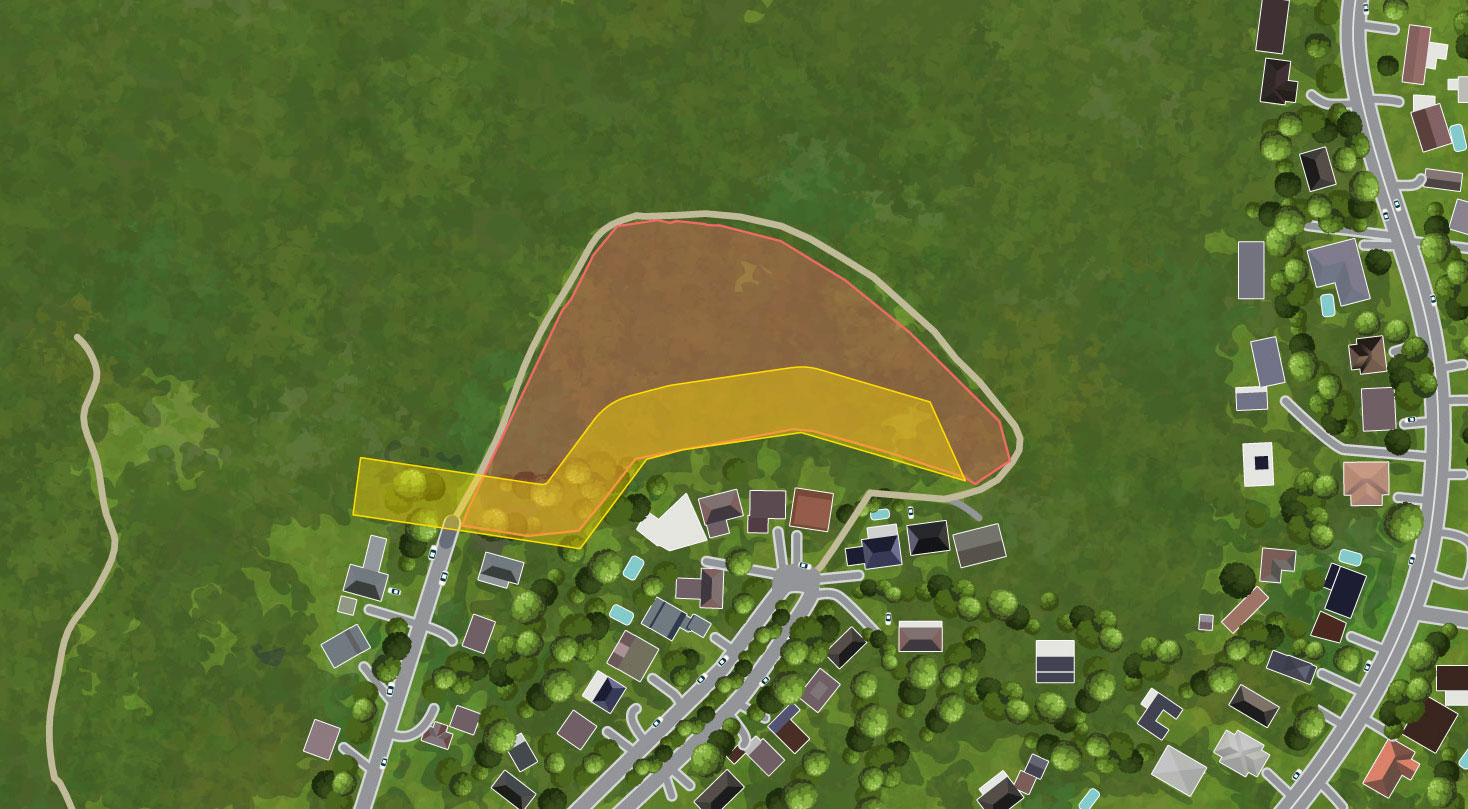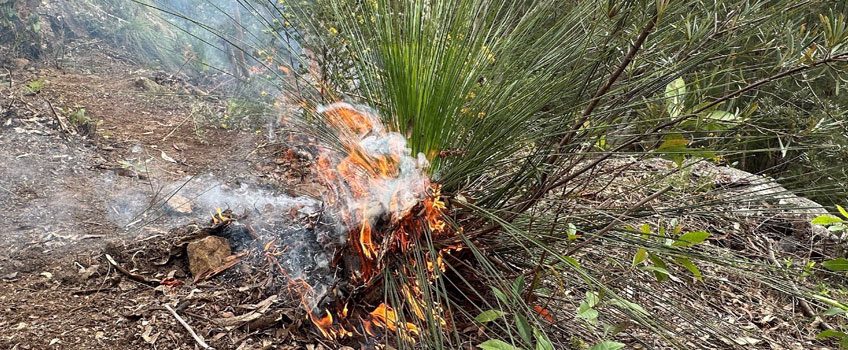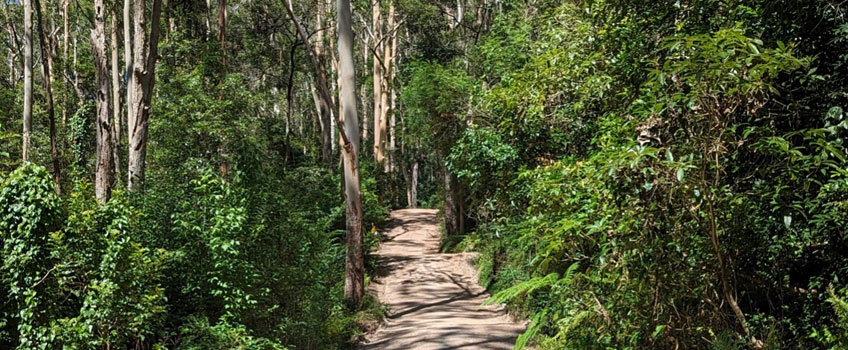Land Management and Community Preparedness
Councils Bush Fire Land Management and Community Preparedness is brought to you by your Special Rate Variation. Building a stronger future for Hornsby Shire.
Council undertakes a range of land management activities designed to reduce bush fire risk to property and the community. These include:
- Establishment and maintenance of asset protection zones
- Planning and implementation of hazard reduction burns
- Management of fire trails
- Community engagement
Click on the image below to find out how Council prepares to reduce bushfire risk to property and the community.


An Asset Protection Zone (APZ) is a buffer zone between a bush fire hazard and buildings. The APZ is managed to minimise fuel loads (vegetation) and reduce potential radiant heat levels, flame, localised smoke and ember attack. It provides an interface where fire management operations (such as active suppression and backburning) can occur.
Establishment and maintenance
APZs on Council managed land are established and maintained cyclically in a sustainable manner using bush regeneration techniques and fire to reduce built up fine fuel loads horizontally and vertically whilst also conserving large logs, rock outcrops and scattered low-lying native ground covers, understory and canopy.
This approach benefits both the local biodiversity and nearby built assets by stabilising slopes, preventing soil erosion and protecting habitat for fauna whilst at the same time managing the finer vegetation that contributes to fire spread and intensity.
Can a Council managed APZ be used to determine your BAL Rating?
Council can provide no assurance that its Asset Protection Zones (APZ) will be maintained in perpetuity. For this reason, a Council managed APZ should not be used as a basis for assessing Bush Fire Attack Level (BAL) as part of a new development application, complying development certificate or similar.
To find out more on Asset Protection Zone provisions required for new development in accordance with Planning for Bush Fire Protection visit Councils Development on Bush Fire Prone Land page.
This project is brought to you by your Special Rate Variation. Building a stronger future for Hornsby Shire.

Hazard reduction burning, also known as controlled burning or prescribed burning, is a fire management technique used to reduce the risk of uncontrolled wildfires. It involves deliberately setting fires under controlled conditions to burn away excess vegetation, such as dead leaves, dropped bark, grasses, and small shrubs, which can act as fuel for larger, more dangerous fires.
Council’s role
As a land manager Council takes an active role in planning hazard reduction burns in our reserves. In doing this, we consider many factors including risk reduction to our neighbours, fire history of the area, and ecological benefit to our reserves.
The aim of hazard reduction is to strategically establish a mosaic pattern of controlled burns across the landscape. This approach creates a patchwork of varying fire histories, which reduces bush fire fuel loads and interrupts fire path.
Creating areas of burnt and unburnt country not only achieves risk reduction to the community but also provides for spatial and temporal diversity of fuel loads and species composition.
Hazard reduction and the environment
Hazard reductions are carefully planned and balanced to minimize negative impacts on ecosystems while still achieving the main goal of reducing bush fire risk. Over-frequent or uncontrolled burning can degrade habitats, disrupt plant regeneration and harm species that are not fire-adapted.
Before burning Council undertakes an environmental assessment to determine the biodiversity value of the area and how the burn might impact local plants and animals. Special attention is given to protecting threatened species and their habitats.
The timing and season of hazard reduction burns is crucial for minimising harm to native wildlife and ensuring sufficient ensuing rain and soil moisture for plant regeneration and seed germination. To minimise impacts on animals, controlled burns are often scheduled outside of the breeding and nesting seasons.
Cultural burning
Council encourages connection to country through safe cool burning practices to not only deepen relationships with indigenous custodians but to also manage vegetation and afford protection to indigenous sites. Within the Hornsby Shire there are more than 1,200 known sites, including rock shelters, middens and engravings.
Planned burns
Timing of burns is dependent on weather conditions and cannot be scheduled far in advance. See NSW Rural Fire Service website for up-to-date information on scheduled hazard reduction burns. Actual burn areas may differ slightly from those shown on proposal maps.

Fire trails are an important part of ensuring firefighters can access fires and safely contain them. They are also used to assist with hazard reduction operations across the landscape.
Council manages approximately 21 kilometres of fire trail on its land. This represents about 5% of the total managed across the Shire with the remaining 95% managed by NSW National Parks and Wildlife Service, Crown Lands and Metropolitan Local Aboriginal Land Council.
Priority of fire trail works and funding is determined by the Hornsby Ku-ring-gai Fire Access Fire Trail (FAFT) Plan which identifies strategic significance.
The fire trail network is managed in accordance with the RFS NSW Fire Trail Standards and the NSW Rural Fire Service Fire Trail Design Construction and Maintenance Manual. These documents define requirements for trail width and clearances, drainage, signage and gates, accessibility, vehicle carrying capacity and other traits that impact on the performance of the fire trail and the safety of emergency service personnel in the event of a fire.

Community engagement is a powerful tool for improving bush fire risk awareness. Effective community engagement can improve resilience of residents to fire emergencies and aid in protecting persons from injury or death and property damage arising from fires.
It is Councils vision that its community is empowered to make informed decisions about fire and property management without solely relying on assistance from emergency service personnel.
To aid in the above Council plays an active role in delivering community engagement programs to at-risk communities, in collaboration with other land management agencies (such as NSW National Parks and Wildlife Service and Crown Land) and firefighting bodies (NSW Rural Fire Service and Fire + Rescue NSW).
Engagement activities include street and local area meetings, community group presentations, pop-up stalls at local shows and fetes, targeted letterbox drops and mailouts, library displays, social media campaigns, advertising through kiosks and signage, council website updates and newspaper publications.
For more information
Register your interest in hosting a Council-led street meeting or workshop to connect with your neighbours and receive expert guidance on bush fire preparedness.
This project is brought to you by your Special Rate Variation. Building a stronger future for Hornsby Shire.







